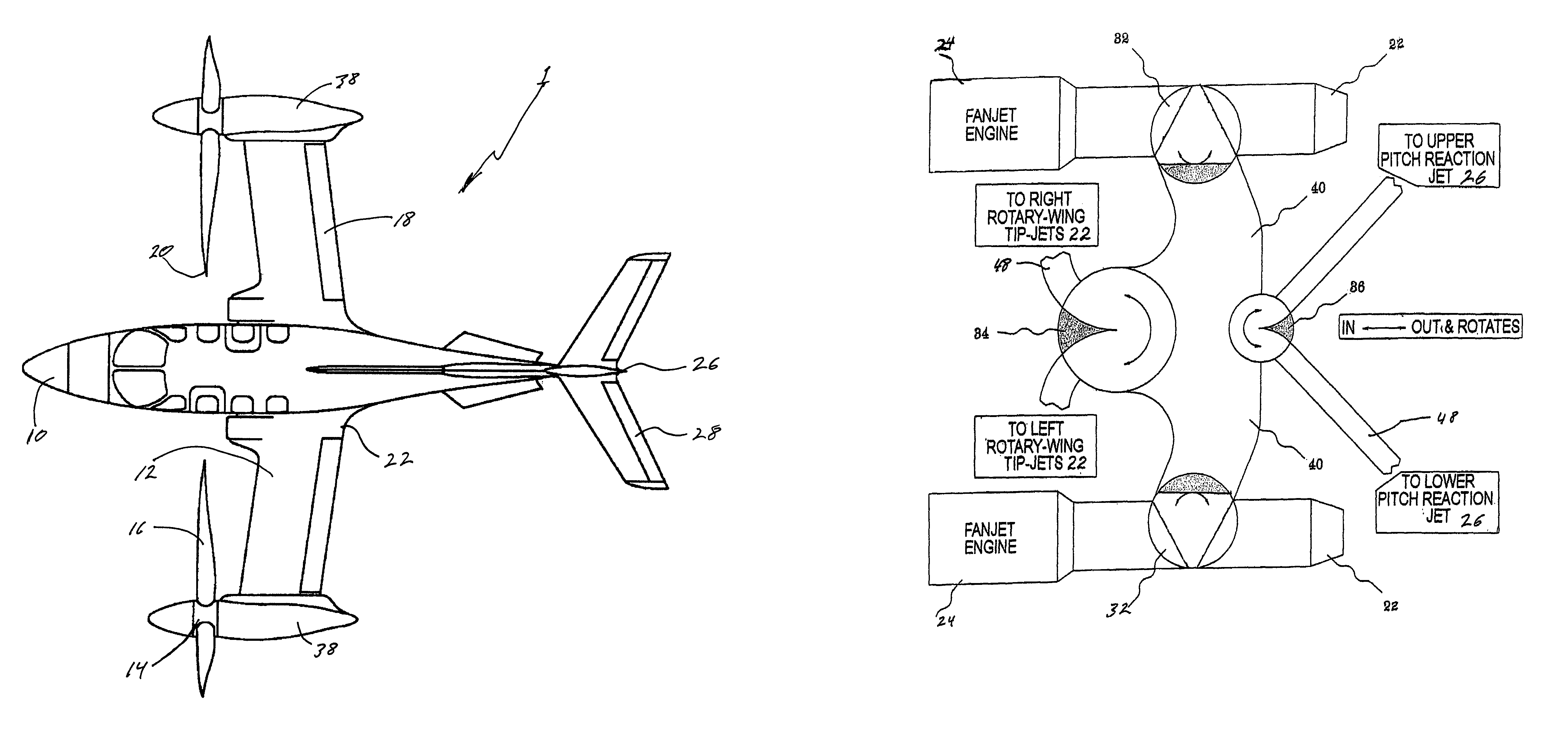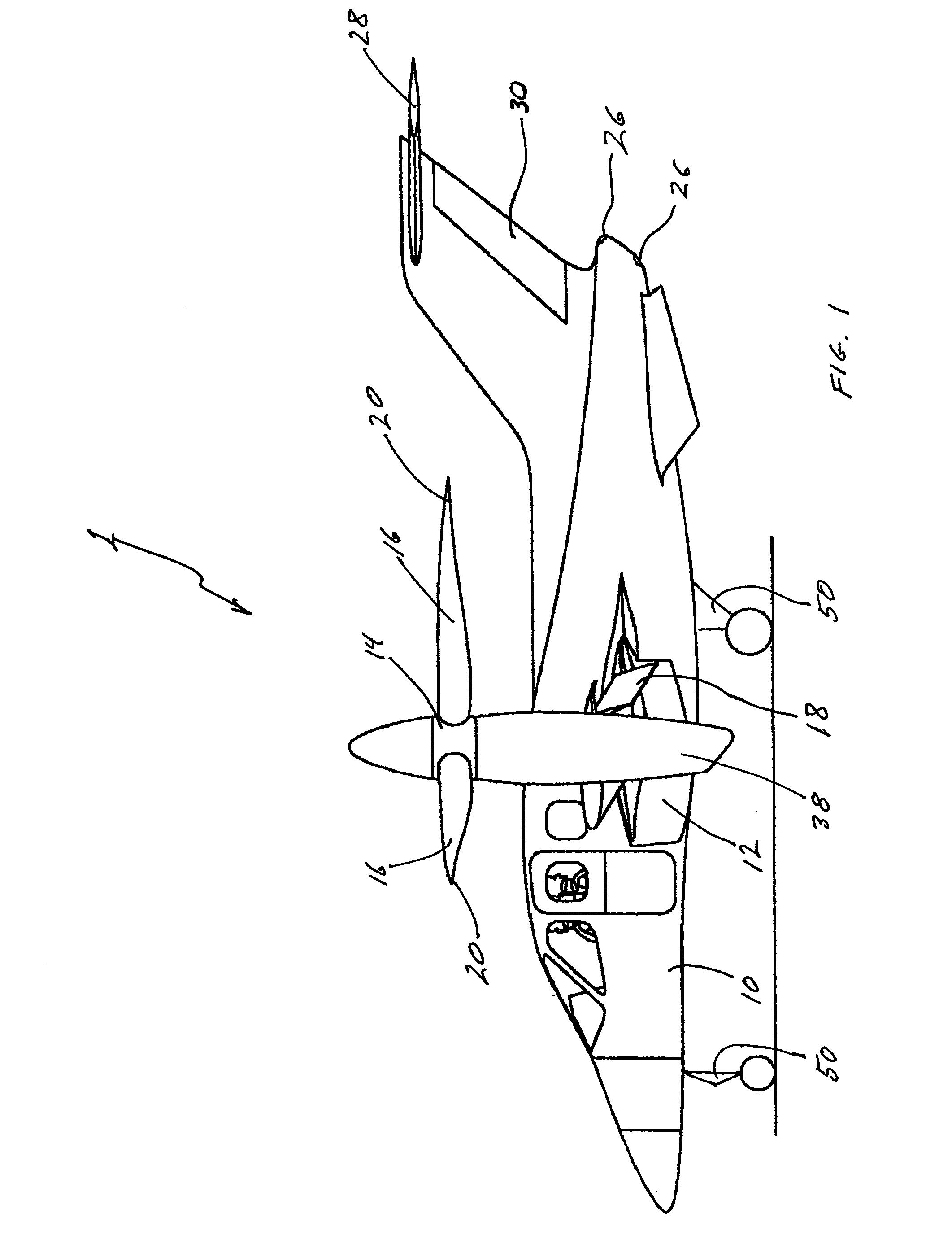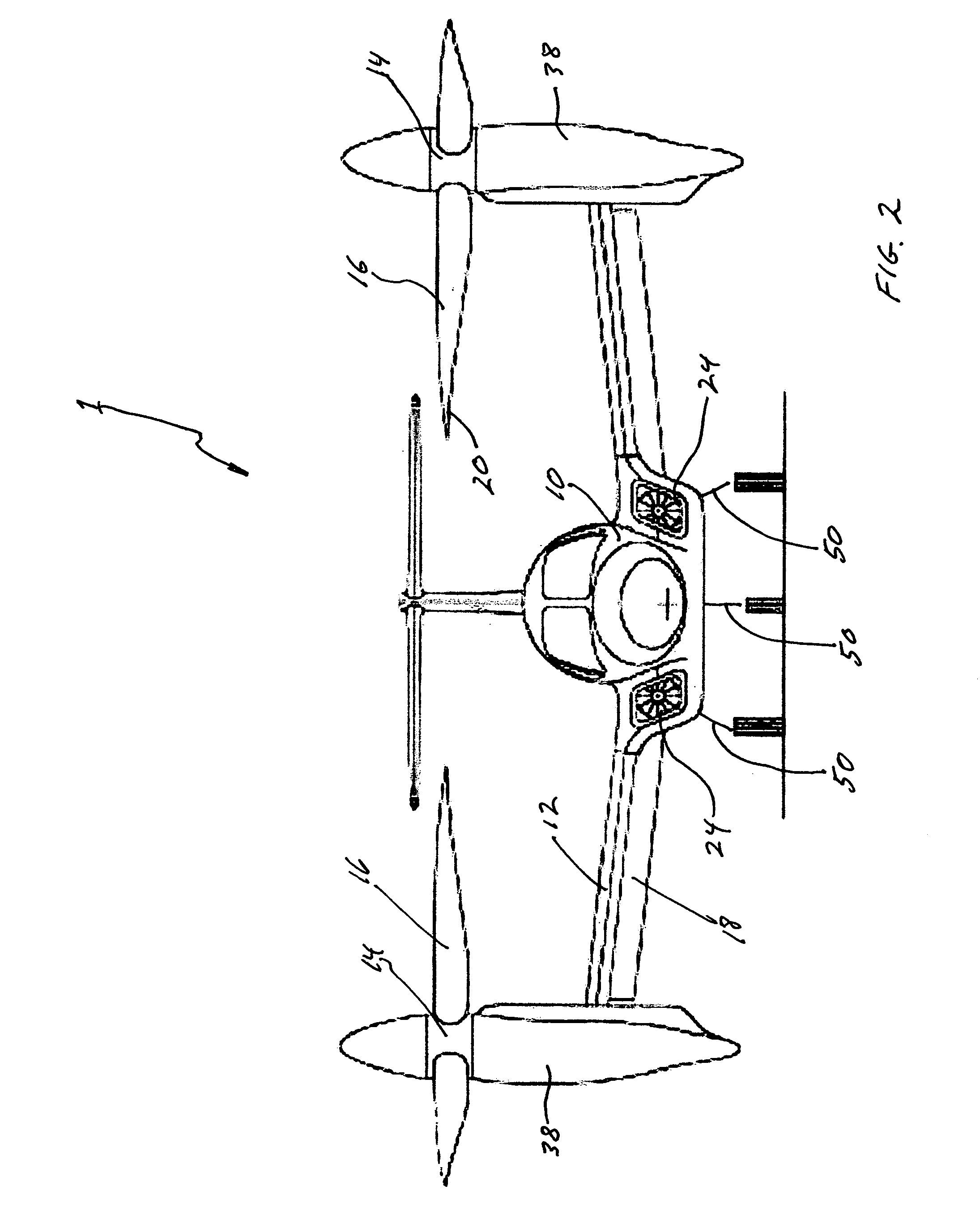Gas-powered tip-jet-driven tilt-rotor compound VTOL aircraft
a technology of tilt-rotor and compound, which is applied in the direction of vertical landing/taking-off aircraft, machines/engines, liquid fuel engines, etc., can solve the problems of achieve the effects of less expensive, easy to take over the powering of both rotors, and saving huge weight, cost and complexity
- Summary
- Abstract
- Description
- Claims
- Application Information
AI Technical Summary
Benefits of technology
Problems solved by technology
Method used
Image
Examples
Embodiment Construction
[0023]It is generally understood and defined herein that a compound aircraft is one that has both fixed wings and rotary wings for sustenance of flight. This embodiment of a compound aircraft concerns itself with a particular type of tip-jet driven compound aircraft, and that type is a tilt-rotor tip-jet driven VTOL aircraft. As we shall see momentarily in the drawings, the invention comprises a supporting structure, hub, rotor / propeller (hereinafter called rotor assembly) and nozzles or tip-jets (as fully described in my first disclosure). The supporting structure for multi-engine aircraft (or yoke for single engine aircraft) is rotated about the pitch axis that is generally coincident with the center of lift and / or the center of gravity in the case of single engine aircraft. The yoke or supporting structure extends up in the vertical position to put the rotor or propeller in the horizontal plane for vertical take-offs and landings, and then is rotated to the horizontal position, w...
PUM
 Login to View More
Login to View More Abstract
Description
Claims
Application Information
 Login to View More
Login to View More - R&D
- Intellectual Property
- Life Sciences
- Materials
- Tech Scout
- Unparalleled Data Quality
- Higher Quality Content
- 60% Fewer Hallucinations
Browse by: Latest US Patents, China's latest patents, Technical Efficacy Thesaurus, Application Domain, Technology Topic, Popular Technical Reports.
© 2025 PatSnap. All rights reserved.Legal|Privacy policy|Modern Slavery Act Transparency Statement|Sitemap|About US| Contact US: help@patsnap.com



